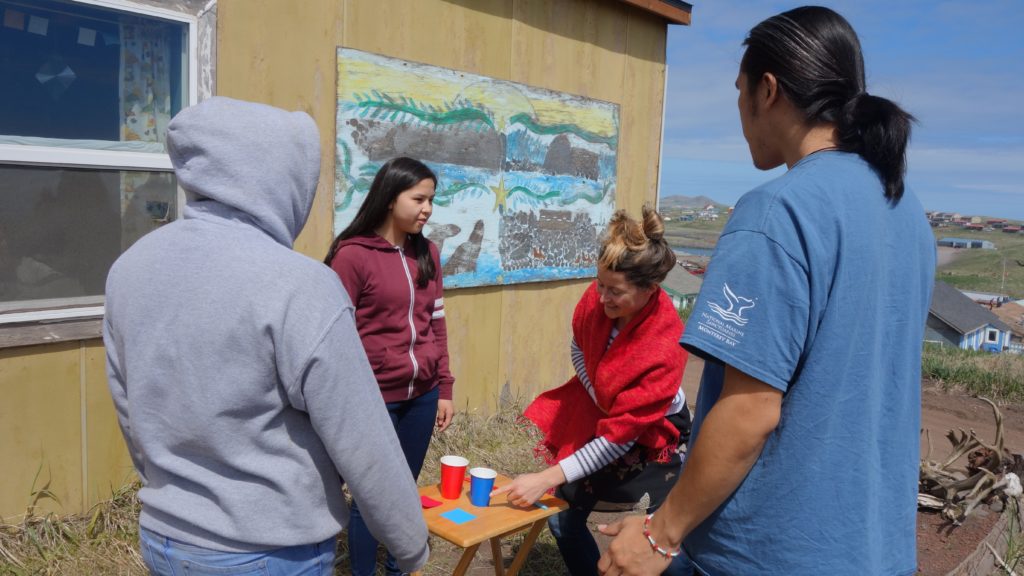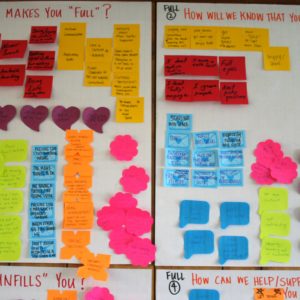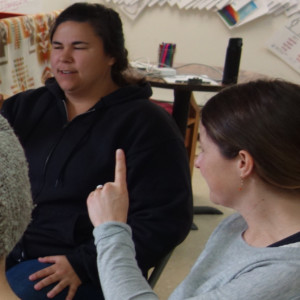
This post explores how blending Where Are Your Keys techniques into a tandem language learning model could support and improve learning. Due to the number of WAYK Techniques I will reference, I will assume you have some familiarity or can access the technique glossary and other blog posts on the website.
In tandem language learning, often referred to as language exchange, two people spend time together to improve the language skills of each. For example, Mamo and I spend an hour together improving my Turkish, and an hour together improving his English. We alternate between the roles of learner and teacher.
Inspired by the values and benefits of tandem, I have been involved in this approach for ten years now, as a participant, facilitator, and program developer. The values include autonomy (partners choose what they want to learn and how), reciprocity (partners support each other in progressing), multilingualism (all languages are considered valuable), and fun. The benefits include one-to-one support, flexibility, cultural insight, networking, and the potential of real friendship.
Even after years of experience though, I still have questions about tandem language learning. The WAYK approach offers many valuable practices and techniques that I think can help answer these questions. Below are some emerging ideas about what blending could look like.
What should you do, exactly, with your tandem partner?
Tandem partners often revert to translating vocabulary items or talking about the target language in the bridge language, simply because they haven’t seen or practiced alternatives that would help them more with developing fluency. I imagine introducing partners to the WAYK practices of pulling and pushing language. Partners could spend time before each language session deciding what to do – a push, a pull, or both – before going into immersion, and later reflecting. Partners would need familiarity with a range of WAYK TQs, from small and practical to large and philosophical, including TQ: Copycat, TQ: Three Times, TQ: Cat’s Out Of The Bag, TQ: Familiar Ground, TQ: Bite-Sized Piece, TQ; Travels With Charlie, TQ: MMSY/MMSN, and TQ: Spare the Fairies. These concepts and techniques could be introduced at the beginning of a tandem program, and added to and reviewed each week. The value of autonomy is maintained.
What order should you do things in?
Tandem partners might follow a textbook, use a program’s weekly topic suggestions, or jump around based on what comes up between meetings. One WAYK tool that might help guide them is the concept of a universal fluency freeway – a progression of discrete pieces of language (e.g. What’s that? or Whose cup is this?) from simpler to more complex. There is no true universal fluency freeway, because what is simple in one language may be complicated in another. Nevertheless, introducing the idea of it and giving partners time to brainstorm a fluency freeway in their teaching language might help them in their teaching role. The exercise would give them plenty of ideas for what to push. I imagine tandem participants taking into consideration their partner’s level and drafting a number of potential rides on cards or paper, from which the partner could take their pick.
Who should lead – the learner or the teacher?
This is always an interesting negotiation in tandem. I think the answer is both. The learner has the ultimate call as to what they are learning and how, but the process of increasing fluency requires the leadership of both partners. Again, the WAYK combination of pushing and pulling makes a lot of sense to me. Sometimes the learner will have a specific piece of grammar they seek, a good TQ: Set Up to elicit it, and the wits to TQ: Prove It. Other times, the teacher will realize that they can explain it with their own set up; they will say “Hold on,” go grab the necessary props, and push the language.
Can total beginners do tandem?
Most tandem literature and programs discourage beginners from trying, based on the common ideas that beginners cannot stay in immersion long enough to converse, and that people cannot teach basic language unless they are teachers. Yet I have always wanted to say yes. I am happy to say that WAYK supports the yes answer! I envision grounding partners in the techniques mentioned above, as well as TQ: Obviously, TQ: Imaginary Friends, TQ: Be Here Now, TQ: Do It For Real, and a good dose of TQ: How Fascinating, and modeling a “What’s this?” ride. With these techniques and practices, I have faith that partners could help each other even from a total beginner level.
I have many more thoughts about blending WAYK and tandem, including potential answers to the questions, “How should partners make the most of their limited time together?” and “What about groups of more than two?”, but will save those for another day. The bottom line is that there is a lot of fertile ground here, in the blending of WAYK methodology, which values immersion and the creation of new teachers, and tandem language learning, which values autonomy, reciprocity, multilingualism, and fun.
Post authored by Mary.




